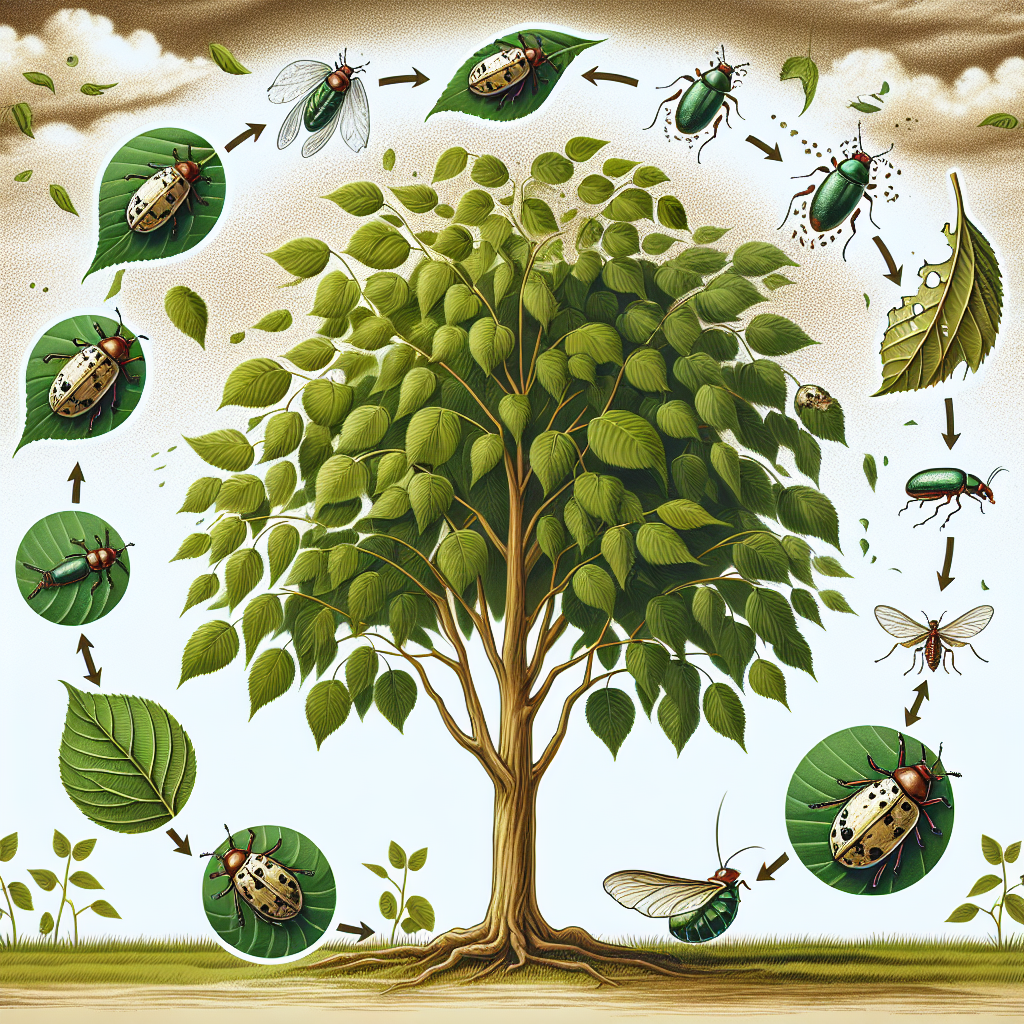Combatting Fusarium Wilt in Cyclamen Plants
Updated June 27, 2024 at 6:18 am
Discover effective strategies to protect your Cyclamen plants from the devastating effects of Fusarium wilt, a guide to identifying symptoms, and implementing disease management practices to ensure the health and beauty of your beloved blooms.

Understanding Fusarium Wilt in Cyclamen Plants
- Pet Friendly: Cyclamen are mildly toxic to pets; their roots contain toxic substances, causing digestive upset if ingested.
- Light Requirements: Prefer bright, indirect light; direct sunlight can damage the leaves.
- Watering: Keep soil moist but avoid waterlogging, as this can promote root rot and Fusarium wilt.
- Humidity: Enjoy high humidity but need good air circulation to prevent disease.
- Temperature: Thrive in cooler temperatures, between 60-70°F (15-21°C); hot conditions can stress the plant and increase disease susceptibility.
- Difficulty: Moderate; requires consistent care and vigilance against Fusarium wilt and other diseases.
When it comes to the vibrant blooms and heart-shaped leaves of Cyclamen, few ailments can cause as much concern as Fusarium wilt. In this deep dive, we’ll explore what Fusarium wilt is, its symptoms, and how you can effectively manage and prevent it to keep your Cyclamen thriving.
What Is Fusarium Wilt?
Fusarium wilt is a soil-borne fungal disease caused by Fusarium oxysporum. This pathogen enters the plant through its roots and obstructs its vascular system, interrupting the flow of water and nutrients. The result is a plant that, despite adequate care, appears water-deprived.
Proper care techniques for your houseplants are crucial, as Fusarium wilt often strikes when plants are weakened by poor conditions. By keeping your plants in their ideal environments, you can reduce the likelihood of disease.
Identifying Symptoms of Fusarium Wilt in Cyclamen
Recognizing the tell-tale signs of Fusarium wilt can be challenging, as they often mimic those of under-watering or over-watering. Look for yellowing leaves, wilting, and leaf drop. A definitive sign is stunted or distorted new growth.
You might be noticing a change in your Cyclamen’s appearance, such as the leaves turning yellow at the edges or the plant becoming generally lackluster. These could be early indicators of Fusarium wilt, especially if you’ve been meticulous with your watering regimen.
Preventing and Managing Fusarium Wilt
Prevention is always better than a cure, particularly with Fusarium wilt, where recovery can be difficult. Start by selecting healthy plants. Avoid purchasing Cyclamen with wilted leaves or signs of disease. When choosing your Cyclamen, take a moment to inspect them as thoroughly as you would with an Alocasia or similar plant, ensuring they’re vibrant and robust, with no visible damage.
Maintaining a clean environment is also vital for disease prevention. Remove any dead leaves or debris around your Cyclamen, as these can harbor harmful fungi. Clean your tools before using them on your plants to avoid cross-contamination.
Best Practices for Watering and Soil
Your Cyclamen’s watering schedule and soil composition play significant roles in preventing Fusarium wilt. Use well-draining soil to reduce waterlogging.
You might be considering a soil amendment such as perlite or sand to improve drainage. These options can help keep the roots aerated and free from excess moisture, reducing the risk of fungal invasion.
Fusarium-Resistant Varieties and Choosing the Right Plant
One way to tackle Fusarium wilt is by selecting resistant cultivars. Though no plant is entirely immune, some Cyclamen varieties have been bred for increased resistance to fungal diseases.
When picking out a Cyclamen, it’s crucial to look beyond the aesthetic appeal and consider the plant’s resilience. Just as you would with a vegetable garden, where you might select pollinator-friendly varieties, choosing a robust Cyclamen cultivar can make a world of difference in disease management.
Importance of Proper Fertilization in Preventing Fusarium Wilt
While it’s not about overloading with nutrients, the right fertilization can bolster your Cyclamen’s defenses against Fusarium wilt. A balanced, controlled-release fertilizer can provide steady nutrition without the risk of over-fertilization, which can lead to weak growth and increased susceptibility to disease.
Selecting a fertilizer should be as thoughtful a process as choosing your Cyclamen’s pot. Look for products that offer a balance of nitrogen, phosphorous, and potassium, and pay attention to how reviewers describe their experiences. For instance, users of the Osmocote Smart-Release Plant Food Flower & Vegetable have noted its effectiveness for indoor plants and appreciate its ease of use – a simple yet potent formula that can be applied every four to six months. With a smart-release design, this fertilizer fosters strong root development and improves overall plant health, which could be key in fighting off fungal diseases like Fusarium wilt.
Find This and More on Amazon
Effective Treatment Options for Fusarium Wilt
If your Cyclamen does contract Fusarium wilt, it’s critical to act swiftly to manage the disease. While chemical fungicides can be used, many home gardeners prefer more eco-friendly and sustainable methods.
Trichoderma-based products can be a ‘good guy’ fungus in this battle, acting as a biological control agent against Fusarium wilt. For example, many gardening enthusiasts recommend using a product like Garden Safe Rooting Hormone which contains a type of Trichoderma to help protect plants. According to users who have taken to forums and review sections, they’ve found that it can aid in the prevention of fungal diseases when used as part of an integrated disease management strategy.
Quarantining Infected Plants to Contain the Disease
Isolation can be a powerful tool in containing Fusarium wilt. If you identify an infected Cyclamen, it’s prudent to move it away from your other plants to minimize the risk of the fungus spreading.
Quarantine procedures are similar to what you might do with a new plant, as advised in guidelines for ensuring a healthy indoor garden. By keeping an infected plant in its own space, you’re not only limiting the spread of the disease, but you’re also making it easier to monitor the plant’s progress and adjust your treatment approach as necessary.
Long-Term Monitoring and Aftercare Post-Infection
Recovery from Fusarium wilt doesn’t happen overnight. It requires ongoing attention and care, even if the plant shows signs of improvement. Monitoring your Cyclamen post-infection is key—you’ll want to look out for any recurrence of symptoms and also ensure that the growing conditions remain optimal.
In the longer term, you might find that routine checks and maintenance, similar to caring for a Philodendron Goeldii, will not only aid in recovery but also in the prevention of future outbreaks. Attentive cyclamen care is both reactive and proactive, addressing current issues while laying the groundwork for healthier growth ahead.
Community and Expert Resources for Cyclamen Enthusiasts
One of the best ways to stay informed and prepared for issues like Fusarium wilt is to tap into the collective knowledge of plant communities and experts. Online forums, social media groups, and even local gardening clubs can be treasure troves of information and support.
Engaging with these resources is akin to having a mentor; you’ll find that many members are eager to share their successes and challenges with Cyclamen care, including how they’ve combatted Fusarium wilt. Additionally, expert articles and extension services often provide detailed guides on specific diseases and their treatments.
Organic and Environment-Friendly Alternative Solutions
Moving towards organic solutions, there are several environmentally friendly options to manage Fusarium wilt. Compost teas and beneficial microbes are increasingly popular among gardeners looking to maintain their plants’ health organically.
For instance, compost tea, made by steeping well-aged compost in water, is believed to boost the presence of beneficial organisms that can outcompete harmful pathogens. Although results can vary, many Cyclamen owners report improvements in overall plant vigor and a reduction in disease occurrence after regular applications of compost tea.
Soil Sterilization and Renewal as a Preventative Measure
Soil sterilization might sound intense, but it’s an effective method to eliminate Fusarium spores from your growing medium. You can sterilize potting mix by baking it in the oven or using steam, which can be particularly useful if you’re recycling soil from a previously infected plant.
If you’re apprehensive about soil sterilization, remember that renewing your potting mix regularly is an excellent practice. Fresh, sterile soil can provide your Cyclamen with a healthy starting point, free from disease and pests.
The Role of Proper Drainage and Pot Selection
Good drainage is essential in combating root-related diseases like Fusarium wilt. When choosing a pot for your Cyclamen, ensure it has sufficient drainage holes to let excess water flow away easily.
You might have come across self-watering pots that claim to regulate moisture levels optimally. While these can be helpful for some plants, they may not be ideal for Cyclamen, especially when battling Fusarium wilt. These pots can sometimes retain too much moisture, creating a favorable environment for fungal growth. Always double-check to ensure the pot you’re selecting will truly benefit your Cyclamen’s health.
Common Mistakes to Avoid in Cyclamen Care
Overwatering is one of the most common errors Cyclamen owners make. Although Cyclamen like to be kept moist, overdoing it can lead to root rot and create an inviting environment for Fusarium wilt.
Another mistake is neglecting temperature control. Cyclamen prefer cooler temperatures, and heat stress can weaken their defenses. Make sure your indoor temperature is within their preferred range, and avoid placing your Cyclamen near heaters or in excessively warm areas.
Expert Advice: Consultation with Plant Pathologists
If you suspect your Cyclamen is suffering from Fusarium wilt, consulting with a plant pathologist can provide you with a precise diagnosis and treatment plan. These experts can offer invaluable advice on handling the disease based on the specific circumstances of your plant.
Many plant pathologists are accessible through local university extension offices or agricultural services. Taking advantage of their expertise can not only save your Cyclamen but also enhance your own understanding of plant diseases and health.
The Future of Fighting Fusarium Wilt: Research and Advancements
Research into Fusarium wilt is ongoing, with scientists exploring new ways to combat this challenging disease. From genetic engineering to more effective biological controls, the future may hold exciting breakthroughs for Cyclamen enthusiasts.
Keeping abreast of the latest findings gives gardeners an edge. Whether it’s trialing a new resistant variety or implementing cutting-edge treatment protocols, staying informed can help ensure the longevity and beauty of your Cyclamen plants.
Final Thoughts on Protecting Your Beloved Cyclamen
As a Cyclamen owner, you play the most crucial role in the health and well-being of your plant. Understanding the risks, symptoms, and treatments for Fusarium wilt equips you with the tools you need to safeguard your Cyclamen.
Consistent care, prevention measures, and readiness to take action against Fusarium wilt will give you the best chance at maintaining a vibrant, healthy Cyclamen for years to come. Through attention to detail and a willingness to learn, you can enjoy the full splendor these lovely plants have to offer. Just remember, you don’t have to tackle this alone—the support and knowledge of the plant-growing community are always within reach.
Shop more on Amazon
Flowers & Plants Team
Flowers & Plants Team


